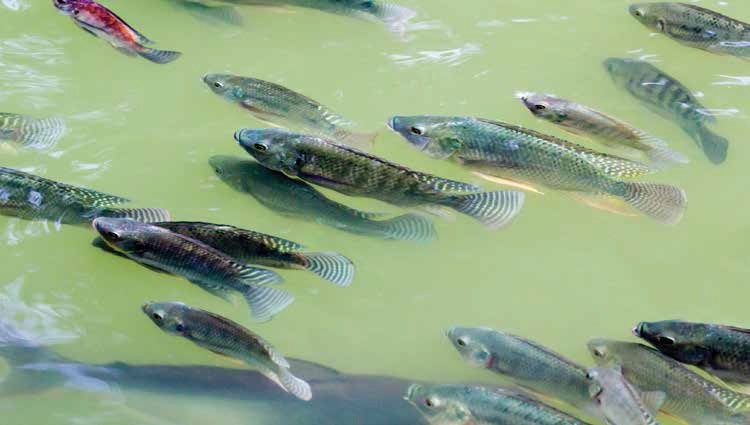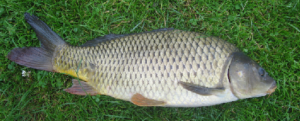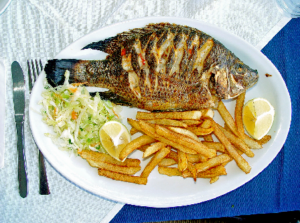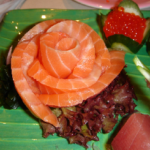Here Fishy, Fishy, Fishy

U.S. soybean farmers know that poultry and livestock eat a lot of soy. But with the growing aquaculture sector, they may hear a lot more about carp, salmon, tilapia and other aquatic species.
Each species of fish requires a specialized feed formulation, and soybean meal, a more sustainable alternative to fishmeal, offers an excellent protein source that can meet the unique needs of each variety.
To better acquaint farmers with this fast-growing customer base, Beyond the Bean reeled in information on five popular species commonly raised in aquaculture operations that have developed quite a taste for U.S. soy.

Carp
Carp is the common name for a large group of freshwater fish native to Europe and Asia. Aquaculture operations involving the species in those continents date back thousands of years. Commonly farmed varieties include grass carp, which accounts for over 20 percent of Chinese freshwater production, and common carp (pictured), which can live to be 38 years old.
Soy meal often composes 50 to 60 percent of the total feed formulation for carp because of its palatability and excellent nutritional value for the species, including high levels of crude protein, complementary amino acid profile and relatively high nutrient digestibility.
Fried carp is a common dish in Europe. And many people in Asia, China in particular, use the fish for dumplings. Carp curry is also popular in India.

Tilapia
Almost one hundred species of fish are considered tilapia. Unable to survive in water below 70 degrees Fahrenheit, most tilapia are produced in tropical or temperate climates.
Various feeding trials have shown that tilapia respond well when fishmeal is replaced with soy meal as a protein source.
Tilapia is widely consumed around the world, including in the United States, Mediterranean countries and Africa.
Catfish
Catfish include a variety of bottom feeders that range dramatically in size. The smallest reach maturity at less than a half-inch long while others can weigh around 120 pounds. All species have the long trademark barbels, or organs they use to find food in murky water, that resemble cat whiskers. Channel catfish is a popular species raised in aquaculture operations.
According to Terry Hanson, PhD, Auburn University, soy meal typically makes up 41 to 47 percent of catfish feed because of soy meal’s high levels of crude protein, amino acid profile and relatively high nutrient digestibility.
People around the world enjoy catfish in a myriad of ways. Americans often batter the fish with cornmeal before frying it. Some in Central Europe and Asia include the species in delicacy dishes.

Salmon
Salmon is a very popular food. The fish is commonly cut into steaks, used for burgers or cured to create lox. Chefs also use salmon in some sushi dishes. Salmon are intensively farm raised in many parts of the world. Because of the rising price in fishmeal, which composes a higher-than-average amount of salmon feed, a sustainable salmon supply demands the use of alternative protein sources like soybean meal.
Shrimp
Shrimp consist of thousands of crustacean species found on the bottoms of lakes, rivers and oceans throughout the world. Around twenty varieties are commercially significant and imported primarily by the European Union, Japan and the United States. Shrimp typically vary in size from one to 10 inches long, with the term prawn used to describe the larger species. Asian countries like China produce the majority of farmed shrimp.
One of the most popular seafood items, shrimp is used in a variety of dishes. In the United States and Europe, shrimp is fried or broiled and served in appetizer dishes. Shrimp is also used in Asia and Latin America to make condiments, soups and noodles.



